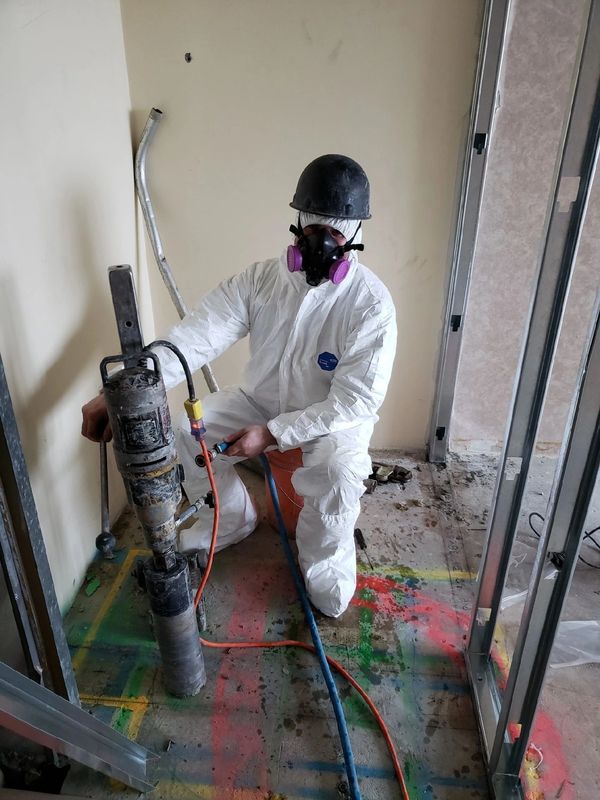Comprehensive Guide to Concrete Scanning Technologies
Comprehensive Guide to Concrete Scanning Technologies
Blog Article
Beyond the Surface: Leveraging Advanced Concrete Scanning Techniques for Unmatched Accuracy and Understanding
Advanced concrete scanning methods have arised as crucial devices in this quest, using a glance below the surface to introduce a world of critical insights. By harnessing sophisticated innovations, professionals can reveal anomalies, evaluate the problem of concrete structures, and make educated decisions that form the program of projects.
Value of Advanced Concrete Scanning
The significance of using sophisticated concrete scanning methods depends on the exceptional accuracy they provide for finding sub-surface abnormalities and guaranteeing structural stability. By utilizing sophisticated technologies such as ground-penetrating radar (GPR), electromagnetic induction, and advanced sonar imaging, building experts can dive under the surface area of concrete frameworks with a level of precision that far surpasses standard examination approaches. Concrete Scanning. These techniques allow the recognition of hidden risks like rebar deterioration, spaces, avenues, or post-tension cable televisions that can jeopardize the stability and safety and security of a structure in time
In addition, progressed concrete scanning provides very useful understandings right into the total condition of a concrete element without the requirement for intrusive actions, lessening the threat of causing damage during the analysis procedure. The capacity to determine the specific location and depth of prospective problems permits targeted fixings and upkeep, inevitably lengthening the life-span of the framework and maximizing its efficiency. In significance, the relevance of innovative concrete scanning can not be overemphasized in the world of building and construction and facilities maintenance, where precision and reliability are critical.
Sorts Of Cutting-Edge Technologies

Abnormalities and Defect Discovery
In enhancement to GPR, concrete scanning techniques like thermography and impact-echo testing are also effective in identifying defects and anomalies. Thermography utilizes infrared technology to identify variations in surface temperature, suggesting prospective locations of issue such as delamination or wetness access. On the various other hand, impact-echo screening entails evaluating acoustic feedbacks to find voids, cracks, and other defects within the concrete. By leveraging these advanced strategies, specialists can proactively resolve structural issues, guaranteeing the longevity and safety of concrete frameworks.
Assessing Concrete Problem
Just how can engineers precisely review the condition of concrete structures to guarantee their longevity and security? Various innovative concrete scanning strategies are employed for this function. Ground-penetrating radar (GPR) is typically used to analyze the interior structure of concrete, finding spaces, fractures, and other anomalies that might compromise its toughness.
Integrating non-destructive testing techniques with visual inspections allows for a comprehensive evaluation of concrete problem, making it possible for designers to determine potential concerns early on and apply prompt maintenance or repairs. By leveraging these sophisticated methods, engineers can ensure the long-term sturdiness and safety and security of concrete structures.
Enhancing Decision-Making Procedures
In the realm of infrastructure management, enhancing decision-making procedures is essential for making certain the effective maintenance and long life of concrete structures. Enhanced decision-making procedures in concrete management entail using sophisticated scanning techniques to collect in-depth data on the condition of frameworks. By leveraging technologies such as ground-penetrating radar and 3D imaging, stakeholders can make enlightened decisions pertaining to repair work, replacement, or support methods.
These advanced scanning strategies give very useful insights into the inner structure of concrete, identifying potential concerns such as gaps, fractures, or corrosion that might her response not show up externally. This level of detailed details enables for positive maintenance planning, decreasing the threat of structural failures and raising the general life expectancy of concrete structures.
Furthermore, by integrating digital documentation and evaluation devices into the decision-making process, stakeholders can track the advancement of concrete conditions with time, enabling predictive maintenance strategies and enhancing source allocation. Inevitably, the integration of advanced concrete scanning methods boosts decision-making procedures by offering unrivaled precision, understanding, and efficiency in facilities monitoring.
Final Thought
To conclude, progressed concrete scanning techniques offer unparalleled precision and understanding in finding anomalies, problems, and assessing the problem of concrete frameworks. By leveraging innovative that site innovations, decision-making processes can be boosted, causing more effective and educated services for maintaining and repairing concrete infrastructure. These strategies play a critical function in guaranteeing the safety and long life of concrete frameworks, making them an essential tool in the field of construction and design.
In addition, progressed concrete scanning offers vital insights into the overall problem of a concrete aspect without the need for intrusive steps, minimizing the danger of causing damages throughout the analysis process - Concrete Scanning. An additional cutting-edge modern technology is 3D X-ray scanning, which provides detailed images of the internal framework of concrete, providing useful information without the requirement for destructive testing. Furthermore, Concrete Cover Meters are made use of to measure the density of concrete cover over reinforcement bars precisely. Boosted decision-making processes in concrete administration entail utilizing innovative scanning techniques to gather in-depth data on the condition of frameworks.In conclusion, progressed concrete scanning strategies offer unequaled precision and understanding in finding abnormalities, defects, and evaluating the condition of concrete frameworks
Report this page